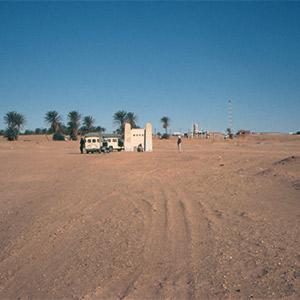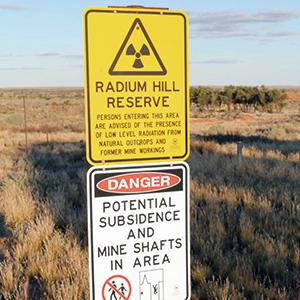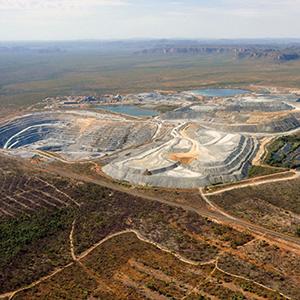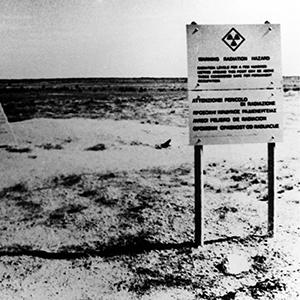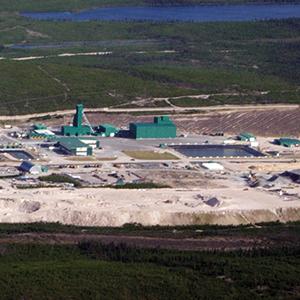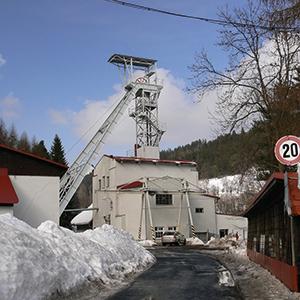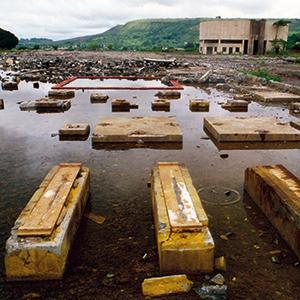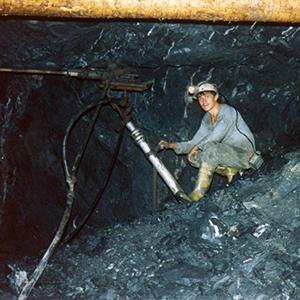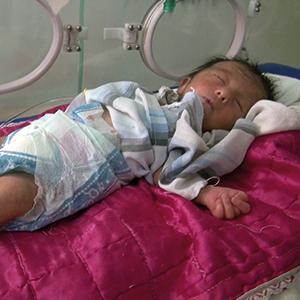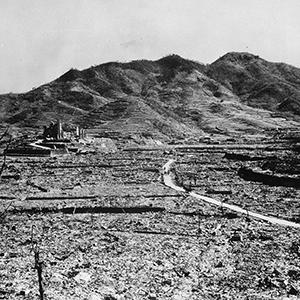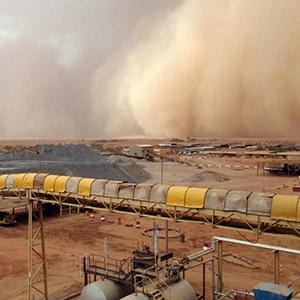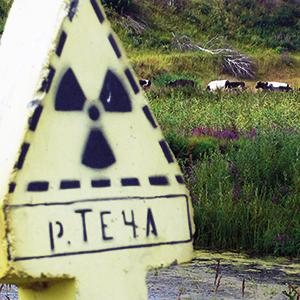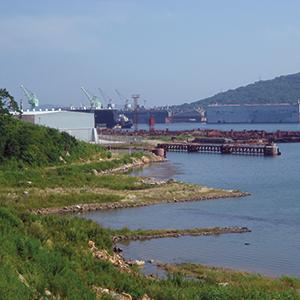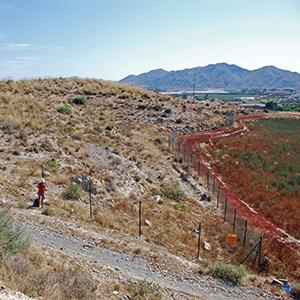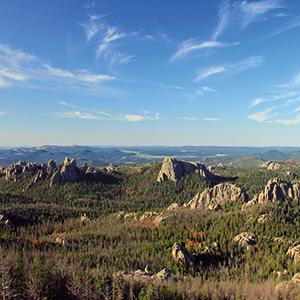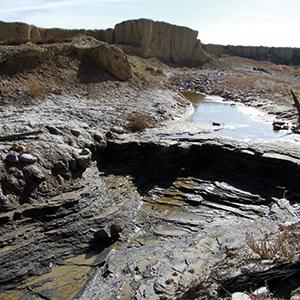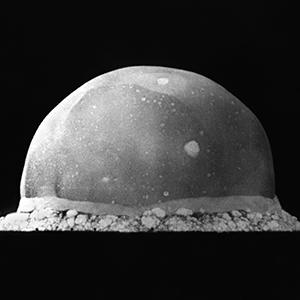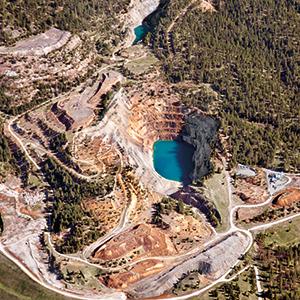Thule, Greenland

The crash of a U.S. Air Force B-52 bomber with nuclear weapons on board contaminated a large areas of land and the surrounding waters with radioactive plutonium. Inhabitants, rescue- and clean-up workers were exposed to high levels of radiation.
Photo: U.S. Air Force base in Thule, Greenland. On January 21, 1968, a B-52 bomber, with four hydrogen bombs on board, crashed 13 km south of the base. © TSGT Lee E. Schading / U.S. Air Force
History
On January 21, 1968, a U.S. Air Force B-52 bomber, carrying four hydrogen bombs, was flying a routine patrol mission over Greenland and Baffin Bay. In the 1960s, up to twelve U.S. nuclear bomber planes were on so-called airborne alert 24 hours a day. This operation, code-named “Chrome Dome,” was supposed to demonstrate an effective response capability in the case of a Soviet nuclear attack. On this day, however, a fire broke out in the cabin, six hours after take-off. The crew was forced to evacuate the plane, which crashed on the ice, roughly 13 km south of the U.S. airbase at Thule, Greenland. One crew member died in the crash, six others survived. Luckily, a nuclear explosion did not occur, but the bombs’ non-nuclear high explosives fully detonated upon impact, blowing the bombs apart and spreading a total of 10 Tera-Becquerel (Tera = trillion) of radioactive plutonium over an area of 7.68 km². Uranium, americium and tritium were also released. Some of the pack ice melted and sank to the ocean floor, carrying with it radioactive isotopes released by the blast. It is estimated that a total of 5 Giga-Becquerel (Giga = billion) of radioactive plutonium polluted the waters of nearby Bylot Sound as a result. A cloud carrying radioactive isotopes drifted south, contaminating an area around the settlement of Narssarssuk, about seven km from the crash site. The incident was designated a “Broken Arrow” – a U.S. military term that describes a major accident or loss of a nuclear weapon. Greenland is a territory of Denmark, which has declared itself nuclear-weapons free. Following large demonstrations in Denmark, the Danish government issued a strong protest note.
Health and environmental effects
Directly after the accident, fishing and hunting were forbidden in the area. Several radiological and environmental studies conducted by Danish and American scientists in the aftermath of the crash showed increased plutonium levels in the pack ice, in seawater, ocean-sediments and algae as far as 17 km away from the accident site.
Cleanup operations were undertaken under the code-name “Project Crested Ice” in order to remove blackened ice from around the crash site. It is claimed that 90 % of the plutonium was removed and 147 freight cars of radioactive waste were shipped back to the U.S., leaving about one TBq of in the ice around Thule.
Plutonium is a highly toxic heavy metal, which can cause severe damage to the kidney, liver or lung cancer when only a few micrograms are ingested or inhaled. Such ingestion is a relevant health risk for the indigenous Inughuit people living in the region, whose diet consists largely of fish and sea mammals, the meat of which is contaminated with plutonium. Especially the inhabitants of nearby settlements like Narssarssuk are affected. Epidemiological studies on their health status were never undertaken.
However, Danish workers assisting in the clean-up reported a significant number of cancer cases and deaths among their colleagues. A 1995 survey found 410 deaths due to cancer out of a sample of 1,500 workers. A similar follow-up study on U.S. workers was never performed, despite the fact that they were more heavily exposed to radioactive material than their Danish colleagues.
Outlook
Following the accidents at Palomares and Thule, regular patrol flights of bombers armed with nuclear bombs were suspended in 1968. In 1996, the Danish Government agreed to pay a compensation of 50,000 Danish crowns per person to the affected workers. In 2008, the BBC published research concluding that one of the four nuclear bombs had not been recovered. However, this is refuted by Eric Schlosser, who says only part of one of the bombs was never found. More than four decades after the accident, not all the documents concerning the accident and its possible health effects have been released and no epidemiological investigations have been undertaken to ascertain health effects on the local population or the U.S. clean-up crews, affected by the radioactive contamination. These people are also casualties of the nuclear bomb – they are also Hibakusha.
References
- Eriksson M. “On Weapons Plutonium in the Arctic Environment (Thule, Greenland).” RNL, Roskilde, Denmark, 2002 http://www.risoe.dk/rispubl/nuk/nukpdf/ris-r-1321.pdf
- “Project Crested Ice – USAF B-52 Accident at Thule, Greenland, 21 January 1968.” U.S. Navy, 1968 www.dtic.mil/cgi-bin/GetTRDoc?AD=ADA283578&Location=U2&doc=GetTRDoc.pdf
- Nielsen S et al. “Thule-2003 – Investigation of Radioactive Contamination.” RNL, Roskilde, Denmark, 2006. www.risoe.dk/rispubl/nuk/nukpdf/ris-r-1549.pdf
- Juel K et al. “Registerundersøgelse afdødelighed og kræftforekomst blandt Thule-arbejdere,” Statens Institut for Folkesundhed 2005. www.si-folkesundhed.dk/upload/thule.pdf
- Corera G. “Mystery of lost U.S. nuclear bomb,” Website of BBC News, November 10, 2008. http://news.bbc.co.uk/2/hi/europe/7720049.stm
- Schlosser E. “Command and Control. Nuclear Weapons. The Damascus Accident, and the Illusion of Safety.” Penguin Press, New York, 2013.







